Taillevent is a Paris institution, opened in 1946 by Andre Vrinat, originally in the 11th arrondissement but now in the 8th near Avenue Champs Elysee. The restaurant is in a fine 19th-century mansion once owned by the statesman The Duke of Morny, a grandson of Talleyrand and a half-brother to Napoleon III. The name Taillevent is the nickname of Guillaume Tirel, who wrote the first known French cookbook back in 1380. Taillevent won a Michelin star in 1948, a second in 1954 and a third star back in 1973. When I first visited here in the 1990s Philippe Legendre was in charge of the food, and it has had just nine executive chefs since it opened. The third star was lost in 2007, and since September 2021 the head chef has been Giuliano Sperandio, who was formerly chef de cuisine at Le Clarence. Born in 1982 in Liguria, he had worked in restaurants from New York to Japan before settling in Paris.
There were several menu choices, from a three-course set lunch at €115 (£98), a four-course menu at €245 (£209), through to a six course €345 (£295) menu. If you go a la carte then starters ranged in price from €110 (£94) to €145 (£124) and main courses €115 (£98) to €130 (£111), with cheese at €30 (£26) and desserts mostly around €36 (£31). The venue has a handsome winding staircase, wood panelling and large chandeliers. The main two dining rooms (one called Trianon and the other Lamenais, the latter serving forty customers) are supplemented by private dining rooms on the second floor.
The wine list had 2,800 separate offerings and over 30,000 bottles in all. The oldest wine in the cellar at the time of my visit was apparently 1890 Château Ducru-Beaucaillou. Wine pairings were available at €270 and €470. I tried to get a copy of the wine list in advance but succeeding in getting a wine list from a restaurant in France is about as likely as a French sommelier acknowledging that foreign wines could possibly be as good as French: in theory it may be conceivable but in practice it will never happen. Even looking at the list at the table has its hazards - the list is “confidential” according to our wine waiter and so even taking a photo of a page of the vast list is forbidden. There are government state secrets that would be easier to obtain than a proper look at this list. I also asked whether it was possible to see the famous wine cellar but this was also apparently off-limits, at least to pesky foreigners like me. In the end we opted for a high-end pairing option at €470 (£402) that is really designed for the tasting menu but worked perfectly well with what we had ordered. Just for information this comprised 80ml glasses of four fine wines: Coche Dury Meursault 2009, Chateau Latour 1999, Jacque Selosse Initial champagne and Chateau dYquem 2014. This all worked out at 1.6 times their retail price, which is not at all bad for a two star Michelin restaurant in Paris. There are apparently some relative bargains tucked away on the mysterious wine list but without some sort of CIA level intelligence gathering operation to get hold of the actual list it is hard to know for sure.
The meal began with a pair of large gougeres made with Comte cheese. These were served warm, as they should be, and the choux pastry was light in texture with just the right level of cheese flavour: essentially the perfect gougere. Pear with seabream was a less obvious combination that was pleasant enough. A duck liver terrine with Parmesan sable was very good, with a delicate sable biscuit and rich flavour. Finally, there was a snail tempura with citrus and tartare sauce, featuring very light batter (average 18/20 canapés). The first bread served was brioche and it was top-notch, light as a cloud and lovely to eat. The sourdough that followed was also excellent.
A further amuse bouche was scallop soufflé topped with caviar. This was a real triumph, the soufflé having remarkably light and fluffy texture and being full of shellfish flavour (20/20). A final amuse bouche was royale of foie gras with a jelly of consommé and artichoke chips. This was also very good, the chips providing some textural contrast and the liver flavour coming through well (18/20). The foie gras supplier turned out to be Robert Duperier, who also supplies Pierre Gagnaire, but finding this snippet out required a little persistence. One waiter did not know who the supplier is, who asked another, who didn’t know either, and finally a manager explained “it is French”. Well, I didn’t think it was from Liverpool. He then seemed bewildered that “French” was not specific enough an answer and asked if I really wanted him to find out from the kitchen? That would presumably involve some modicum of effort; it was as if I had asked to sleep with his sister.
My starter was a whole baked black truffle in pastry with veal sweetbread and a rich jus. The pastry was extremely good and the overall inherent richness of the dish was balanced by a side salad dish of bitter leaves with a little more foie gras and truffles; the leaves were a welcome relief from the richness of the dish. There was also a side element of celeriac gratinated with cottage cheese and truffle, which worked well (18/20).
Scallop came with cabbage, sauerkraut and pickled hispi cabbage with caviar, roasted capers, citrus butter and saffron sauce. On the side was a scallop served in its shell with a coating of pecan nuts. Finally, there was a scallop with a truffle crust. The best element was the final one, the contrast of the shellfish and the earthy truffle working really well. The least successful was the separate scallop with pecans; though the shellfish was nicely cooked, the sweetness of the pecan felt a little off key. The main part of the dish was very good, the sourness of the vinegar used in the pickling of the cabbage nicely balancing the sweetness of the scallop (18/20 overall).
Chicken was from Normandy and was prepared in several ways. The breast poached with spices and coated in Albufera sauce, a classic sauce of French cooking derived from supreme sauce with a meat glaze. There were also rooster crests and the bird was accompanied by sweetbread and Chinese artichokes. On the side was buttery mash with a meat sauce, and veal slices with frisée salad and vinegar. The main dish was very good, the chicken nicely cooked and the sauce excellent. The flavour of the chicken was fine though it was quite mild; I prefer the flavour of Landes chicken but that is a personal thing. My only real issue was that the dish was very rich, and could have benefitted from a salad or something acidic or sour. The vinaigrette from the veal side dish helped a little but the overall effect was still quite rich (17/20).
Wild turbot from Brittany had excellent flavour. I didn’t ask the exact weight of the dish (after the foie gras supplier question incident mentioned earlier – can you imagine the reaction?), but it was clear from the shape and size of the slice of dish that the original turbot was very large indeed. This came with black cardamom and supreme sauce. On the side was ravioli of pumpkin. Finally, there was a side dish of pumpkin cream with slivers of turbot. The main slab of turbot was terrific, having lovely flavour and being carefully cooked. The supreme sauce is based on a veloute (a roux mixed with a light fish stock) that is thickened with cream and strained. This was very good indeed. The only thing that let the dish down was the side element of pumpkin ravioli. I am not sure that this was in any way necessary and it added a sweetness that did not seem quite appropriate, but worst of all the pasta itself had surprisingly hard edges. I would have scored this dish higher had the ravioli simply been omitted (just about 18/20).
There was a lovely old fashioned cheese board groaning with a wide selection of cheeses from around France. The ones that we tried included Camembert, St Maure de Touraine, aged Comte and Fourme d’Ambert and were all in very good condition. There were no chutneys or other accompanying condiments but there was more of the excellent sourdough. For dessert, a riff on citrus included citrus Chantilly cream on a lemon sponge, a lemon Viennese biscuit, a hollowed-out lemon shell with lemon granita and citrus fruit. The granita in particular was superb, but all the elements were nicely made and refreshing (18/20).
To finish, Crepe Suzette was prepared at the table, served with pistachio cream, raw milk and orange blossom, pear and other tropical fruit. The flambee of the pancakes is always theatrical fun and the crepes themselves were light and delicate. I noticed that the waiter took unusual care with the caramelisation of the sugar in the pan, and this avoided the over-sweetness that this dish can sometimes suffer from in less assured hands. The fruit on the side dish provided some balance rather than the overall effect just being a sugar rush (18/20). The coffee was from Cafe Richard, a family run roaster in Paris that has been operating since 1892. This was very pleasant, and accompanying petit fours comprised a very capable and delicate vanilla macaron and chocolate covered almonds.
Service was very efficient and the dining room was served by a large contingent of waiters, so crumbs were removed unobtrusively and bread was topped up as needed. Other than the slightly odd issues noted around the wine list and the bemused attitude to my questions, the service was slick if not especially friendly. The bill was large at €1,737 for two people, which works out at £743 each, but a large part of this was the premium wine pairing. If you instead ordered the short four course tasting menu (€245) and shared a modest bottle of wine from the top-secret wine list then a typical cost per person might be around £270.
Taillevent offers high-class classical French cooking in a handsome dining room and using top-class produce. All this comes at a price, but you can certainly see where the money goes: fine ingredients, plenty of culinary skill and a vast supply of front of house staff, so this felt expensive but in no way extortionate. It was nice to see the old place entirely full on a Wednesday lunchtime in March, so there is clearly demand for this kind of experience, which is old-fashioned in a good way.
Further reviews: 21st Mar 2013 | 01st Jul 1998
















































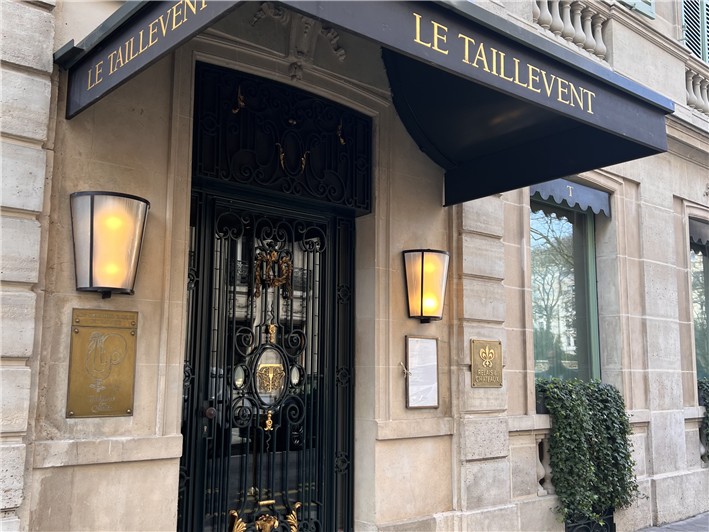

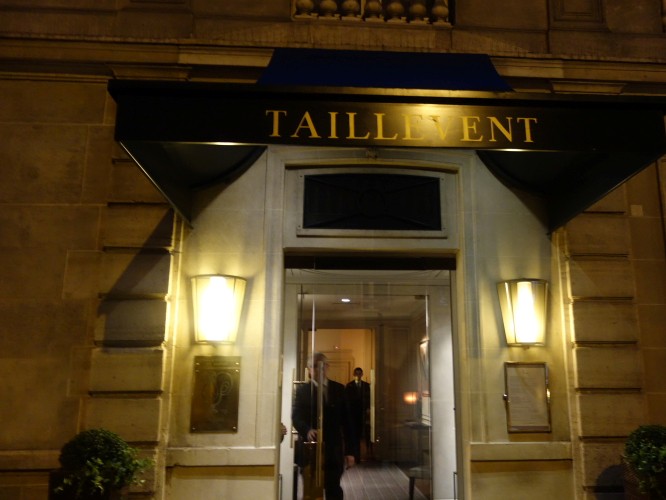
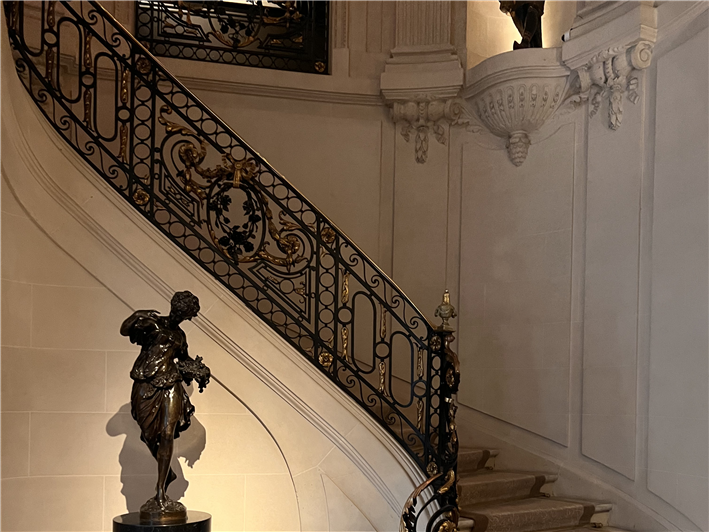
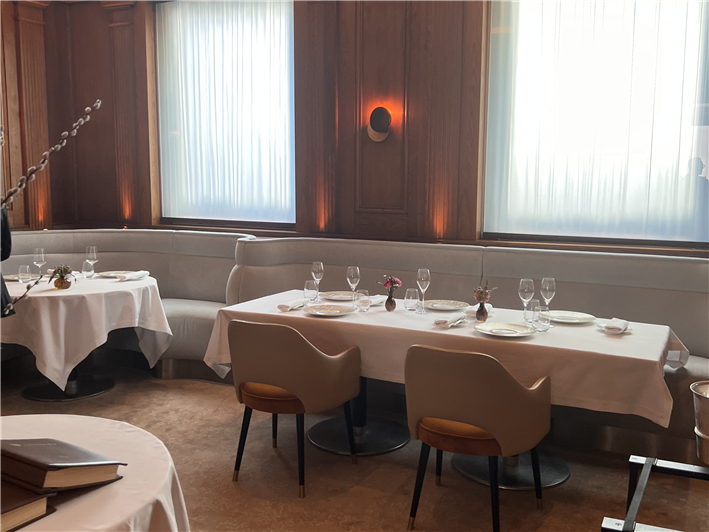
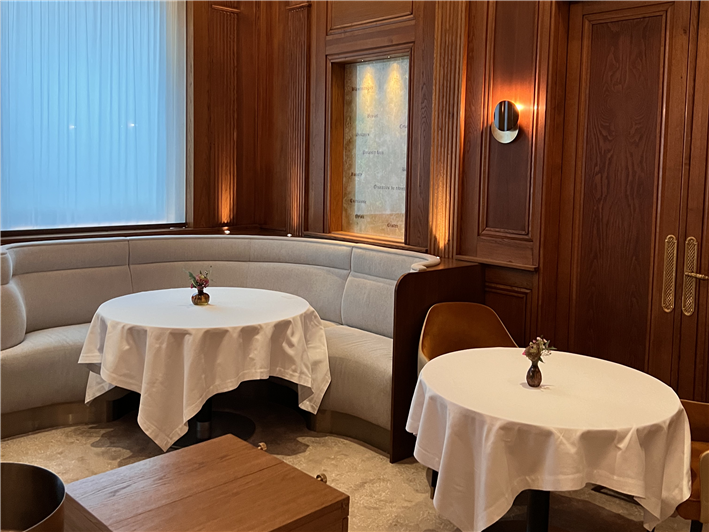
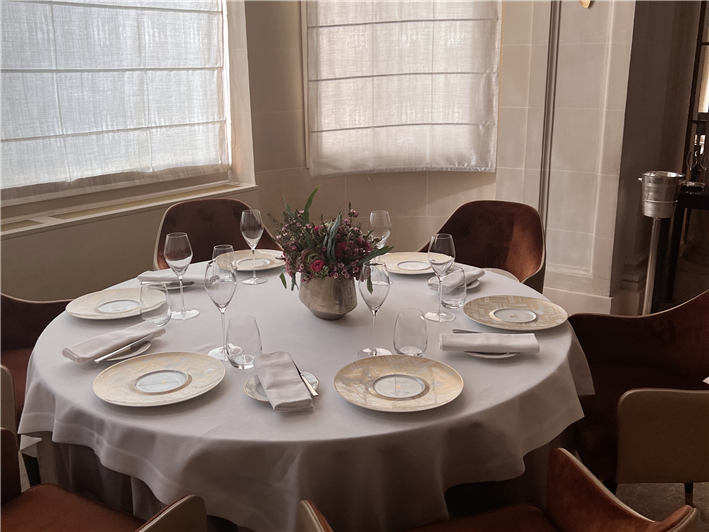
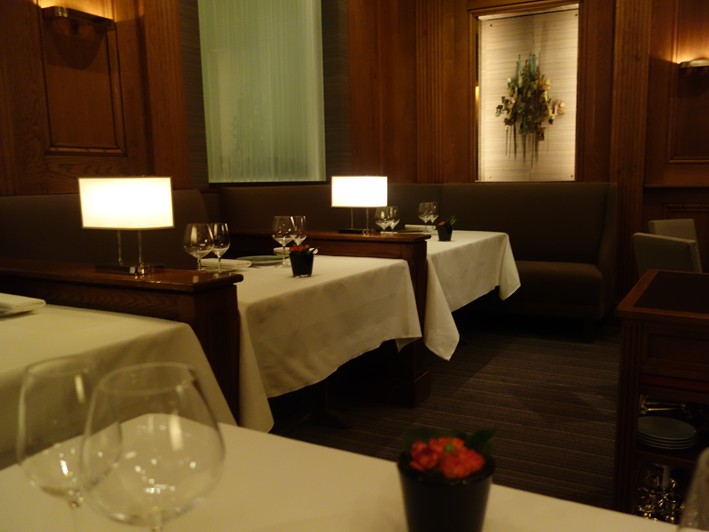
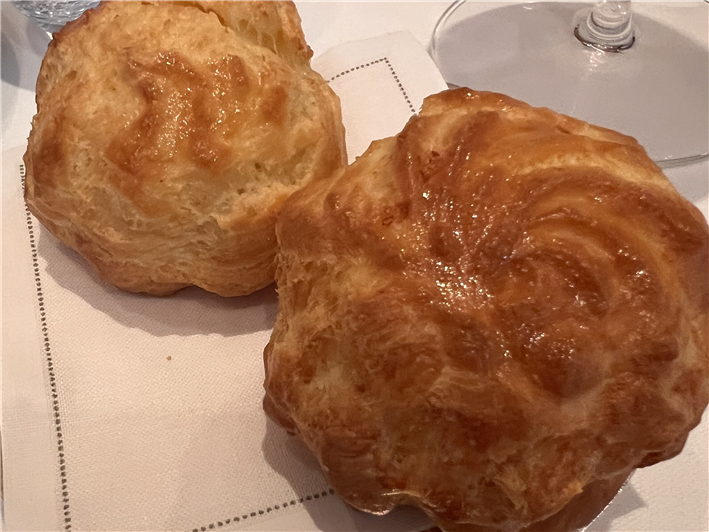
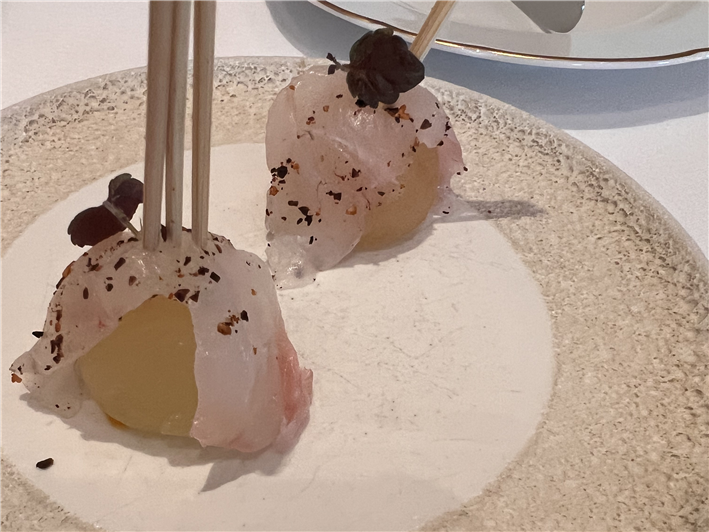
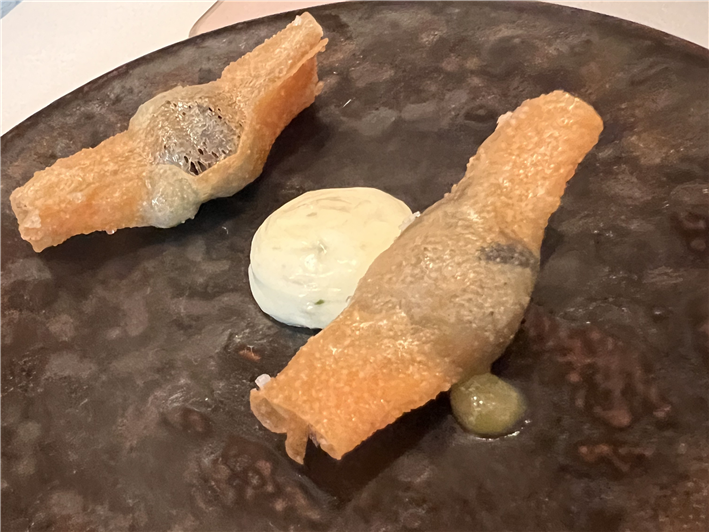
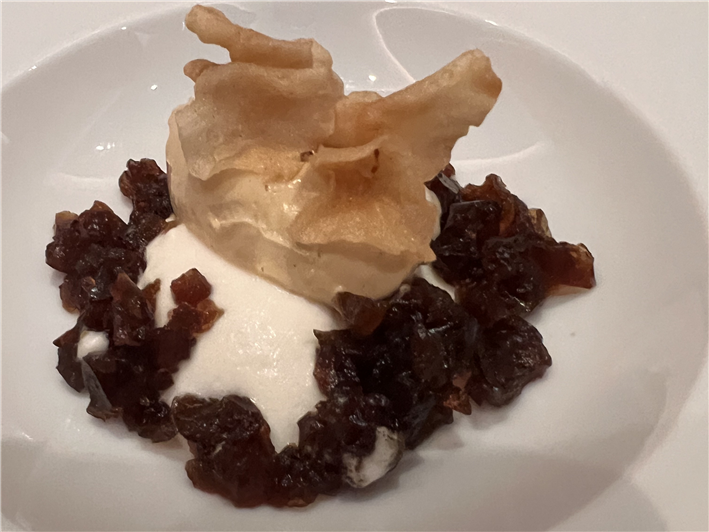
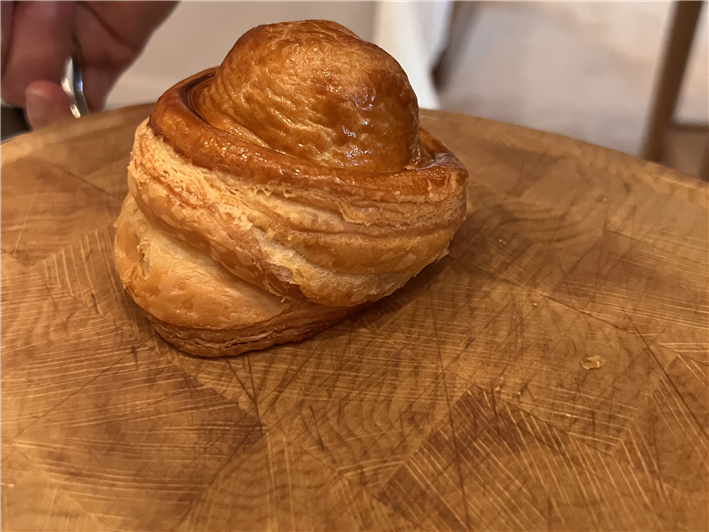

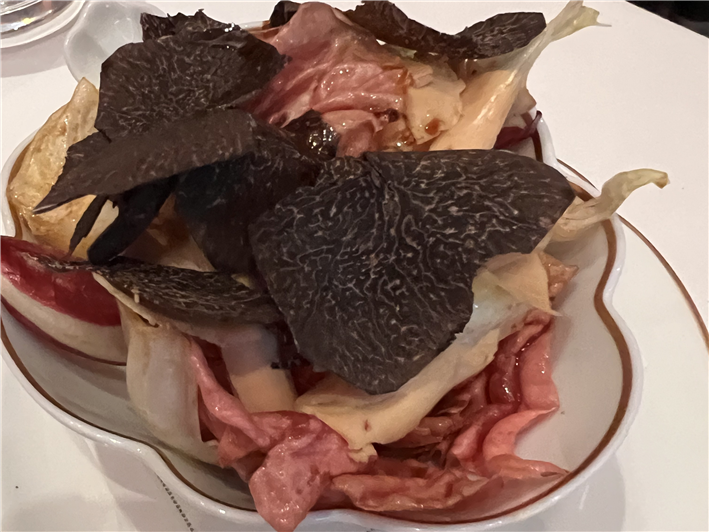
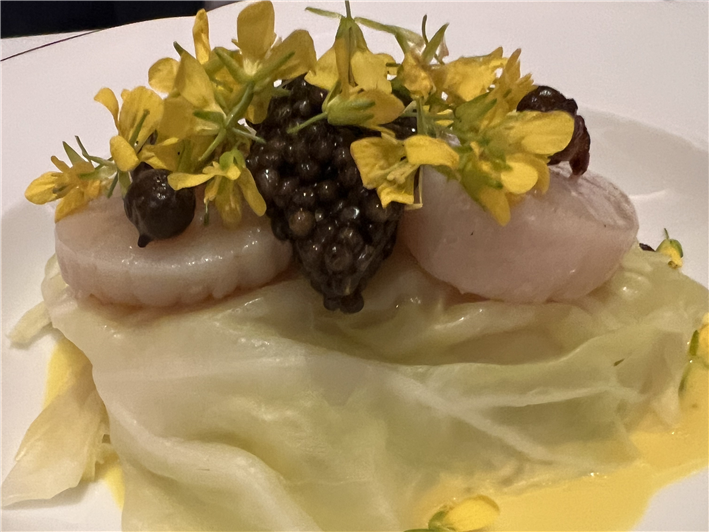

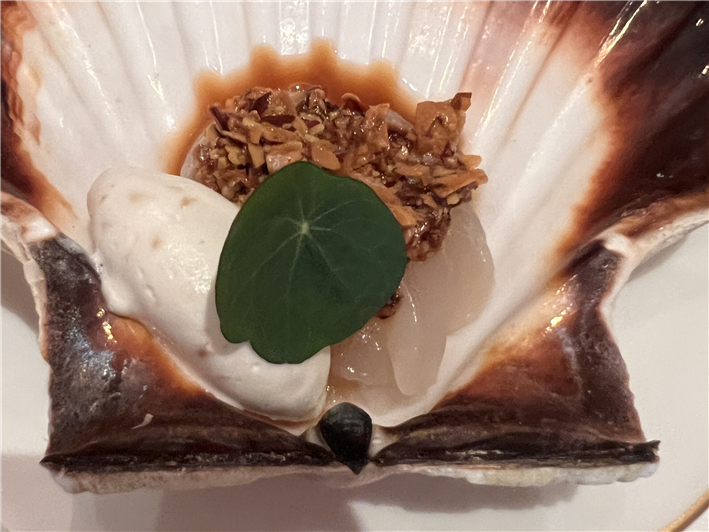
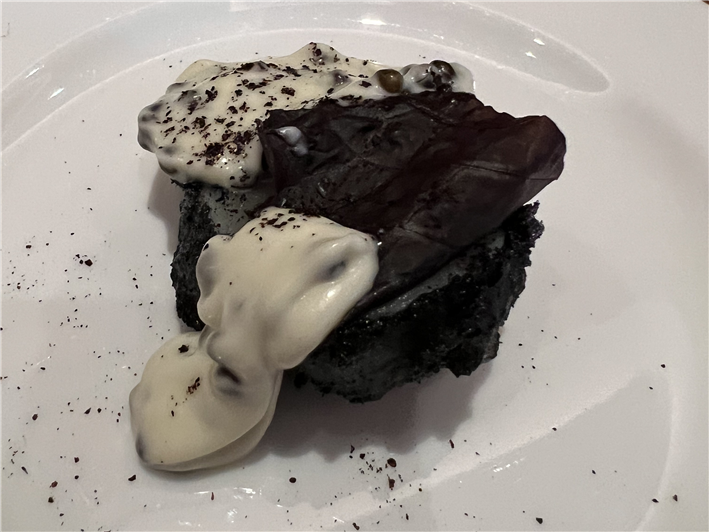
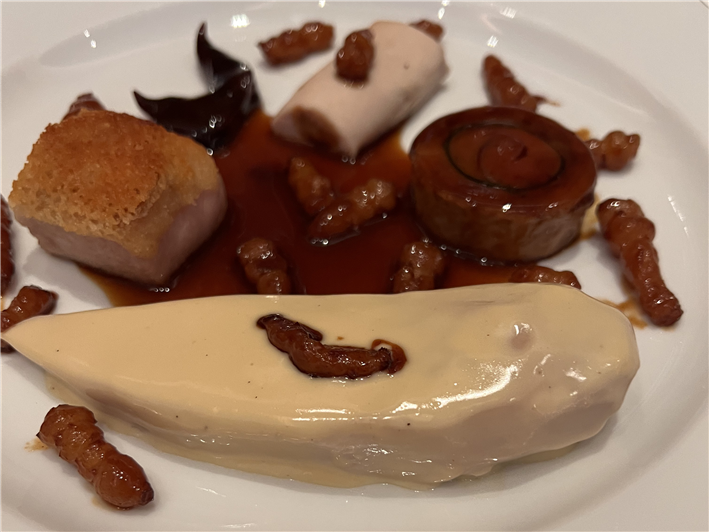
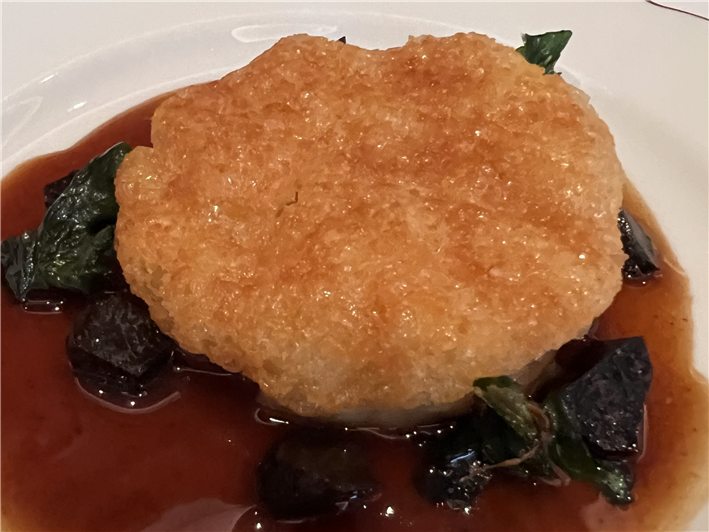

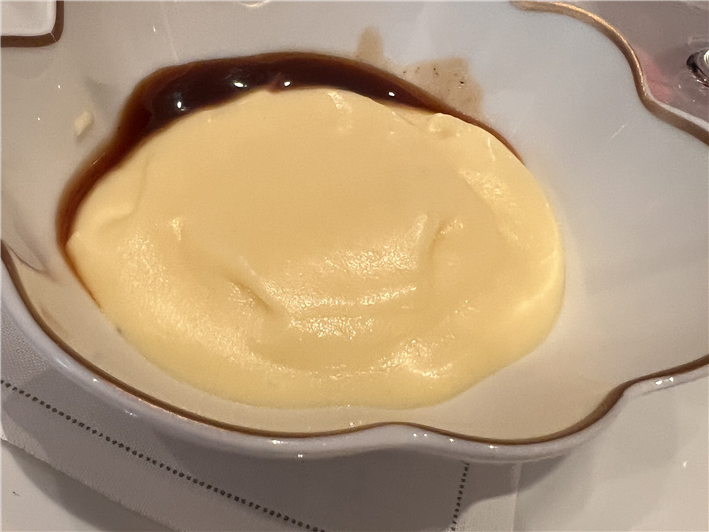

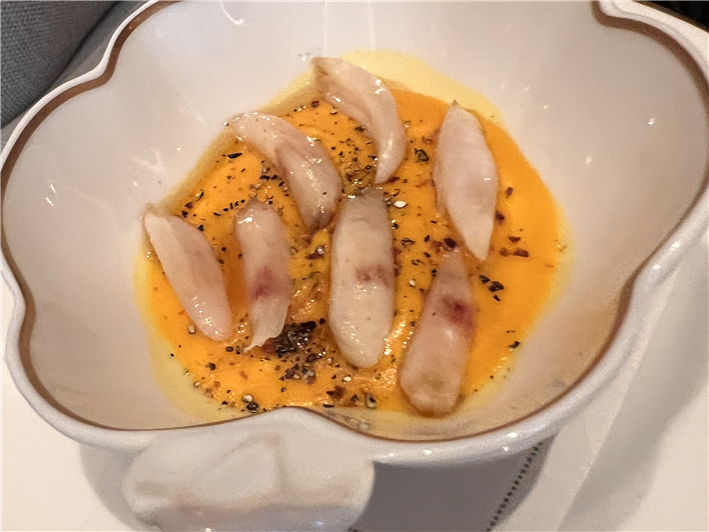
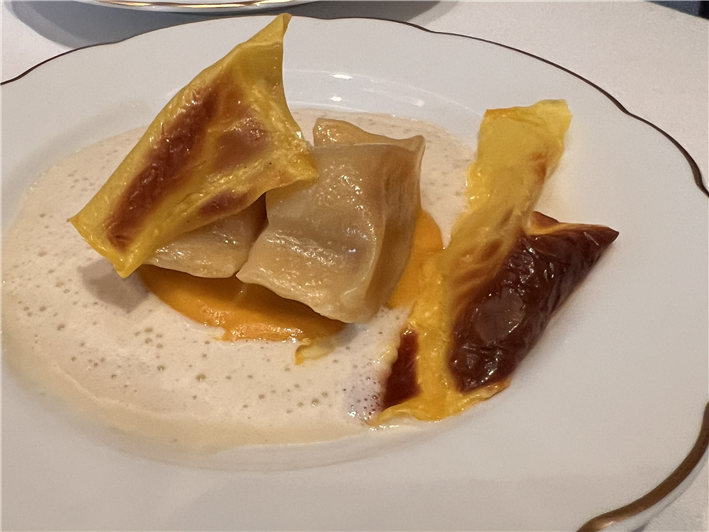

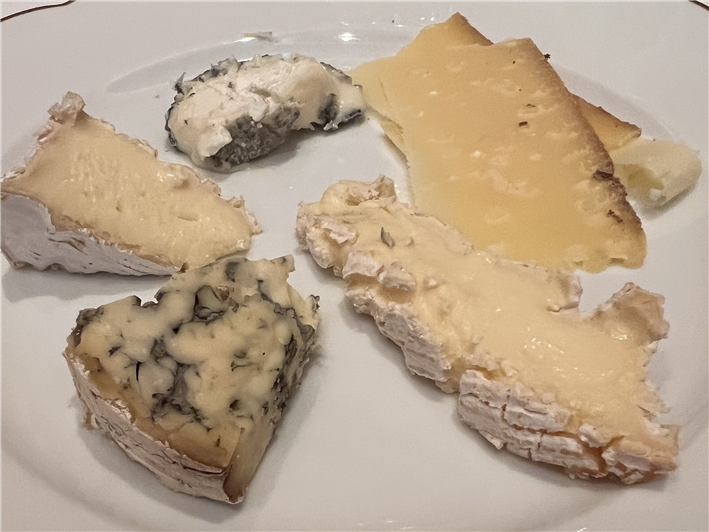
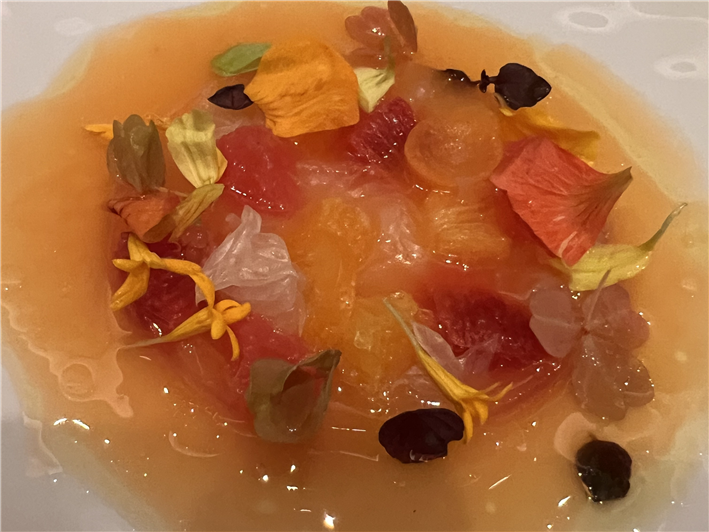

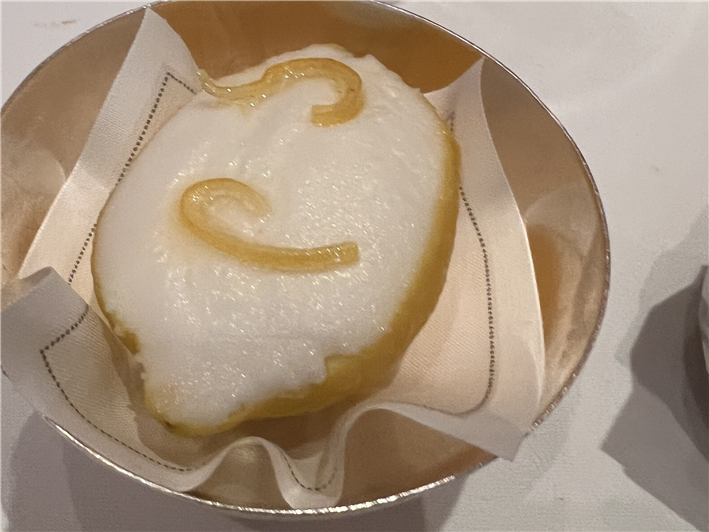




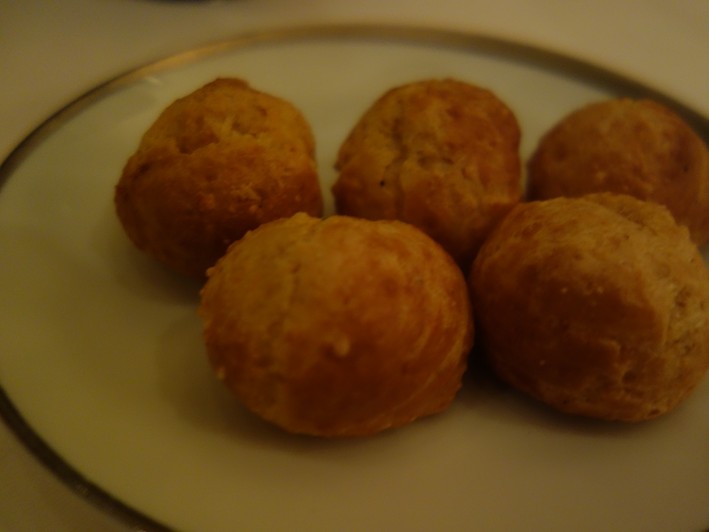


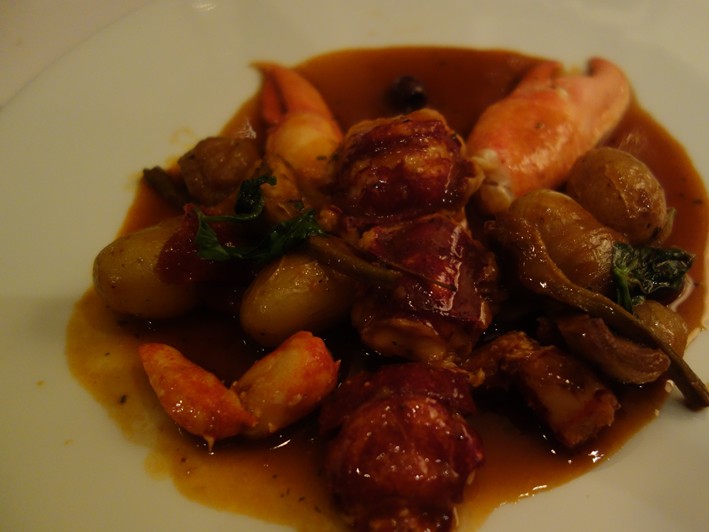

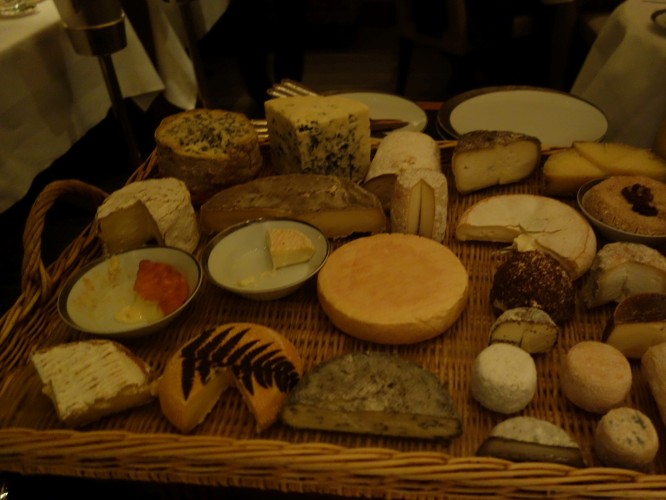
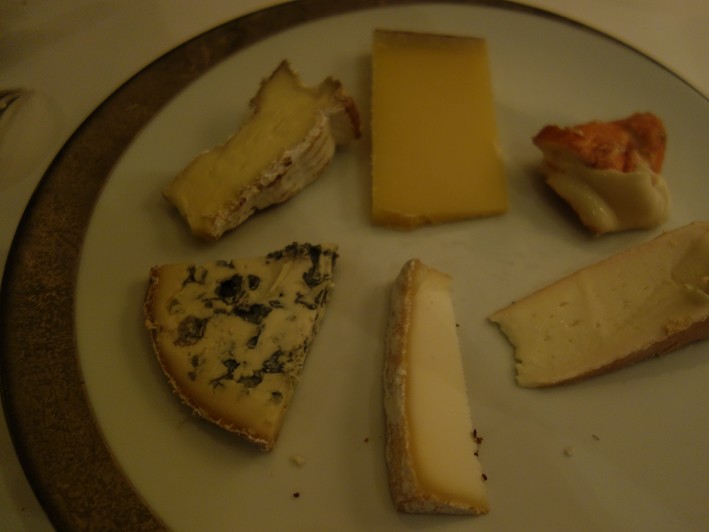
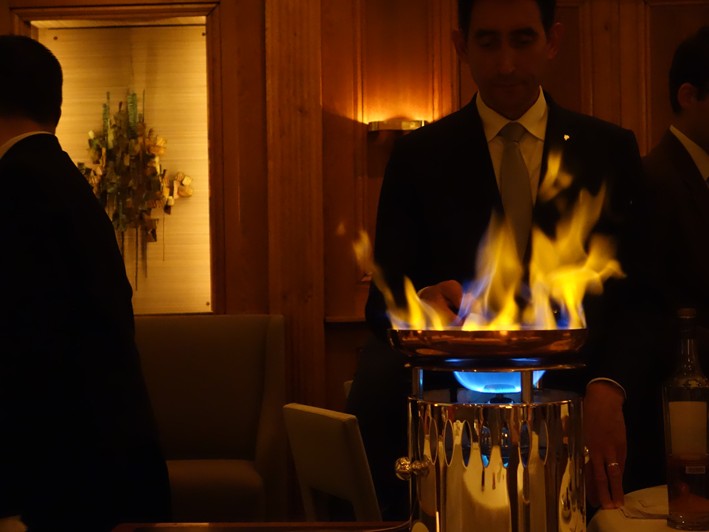
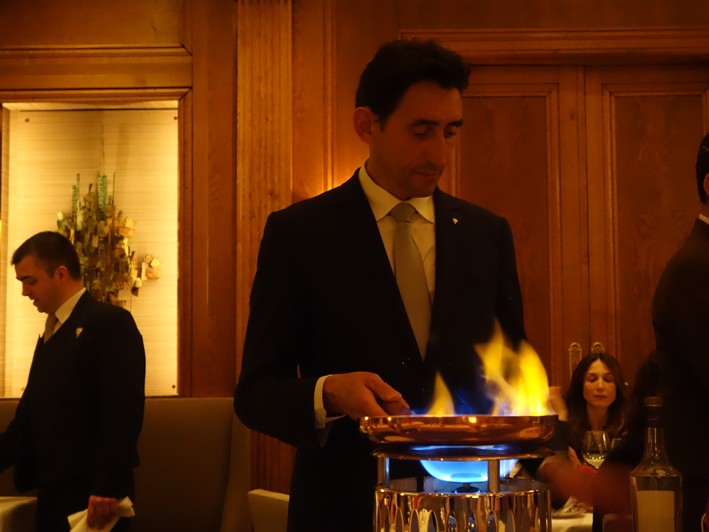


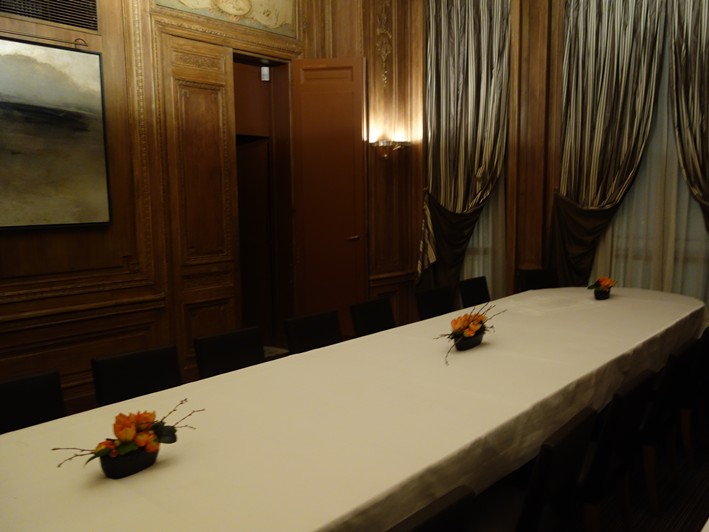

Steve
I’ve eaten here quite a few times and it does represent everything that is good and bad about high end French cooking. Any complement about the food is normally met with an arrogant look as if to say - well, did you expect anything else ? That said, I like this kind of pantomime and enjoy Taillevent. I went there with an American supplier who asked for a coke with his cheese. I don’t know if they serve coke but it never arrived….
Jla
Taillevent is very Good but not amazing. I also find the service there a bit too old style and sometimes condescendant . I prefer le Clarence or Le Gabriel ( which has just got its third macaron last Monday) I find the gap between a 18/20 and 20/20 restaurant to be really meaningful .
John long
Great review as ever- what is this strange reluctance with the wine list in these places- always in France and nowhere else
Bruce Palling
Glad to read of its renaissance